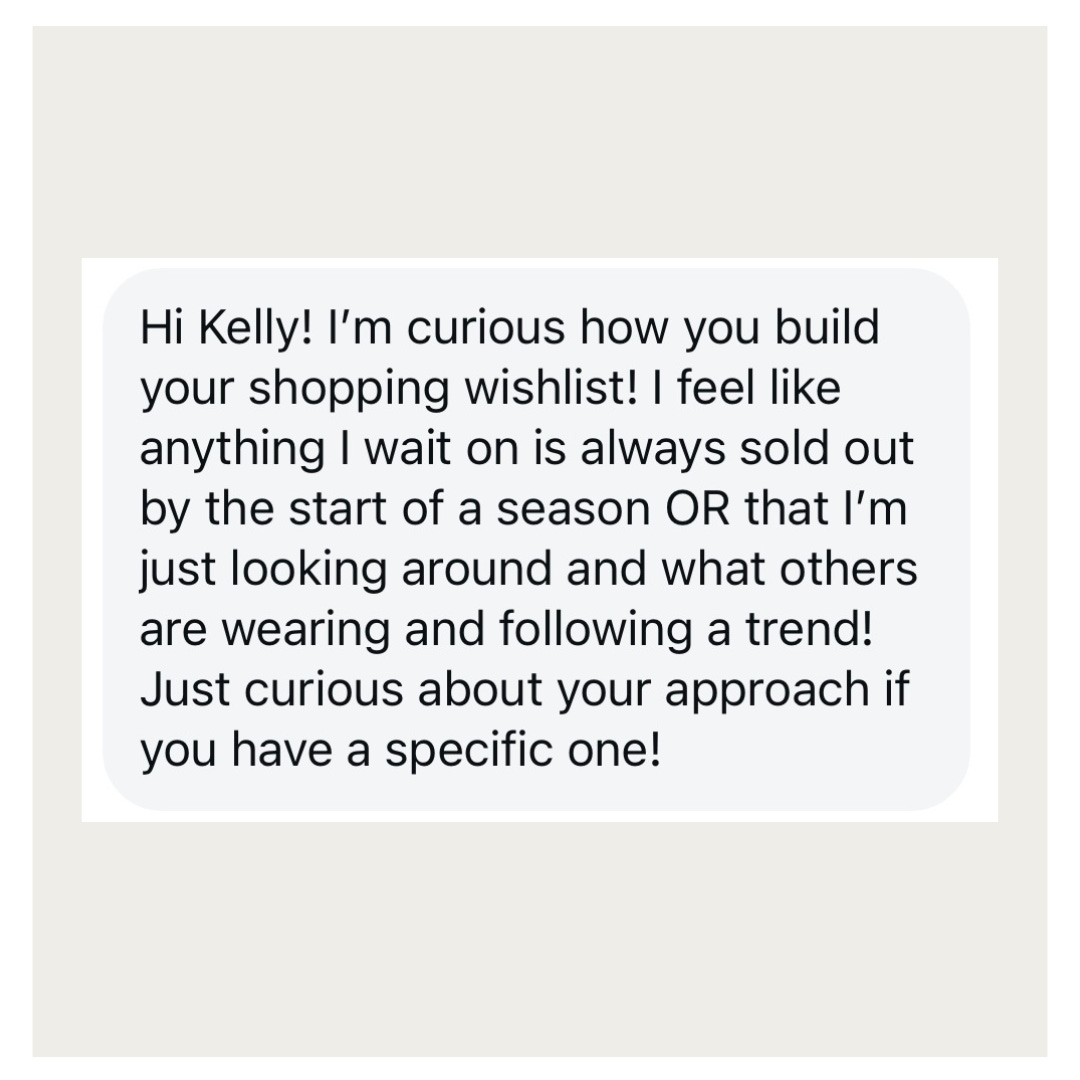6 Simple Steps to Create a Shopping Wishlist
My #1 strategy for intentional, impulse-free shopping!
Although the chilly DC weather this week would have us thinking otherwise, it is officially spring. With the change of seasons, comes shiny new arrivals, tempting sales and the unending chatter of what it trends we should all be wearing in the new season.
I love using the internet/social media to discover new brands, trends, and styling ideas. On the flip side, without a strong sense of personal style, social media can drive stylistic conformity and fuel impulse shopping.
A few years ago, in an attempt to avoid impulse shopping, I started making seasonal shopping wishlists in my notes app. My lists consist of specific brand items (example: Staud black Wally ankle boots), general styles (example: “something sheer”), or items needed for upcoming events (examples: weddings, showers, luncheons).
When I’m tempted to buy something, I refer back to the list and ask myself 1-2 questions. First, will the purchase check an item off the list? If it doesn’t, do I want this new item more than the established items on the list? There are unplanned purchases that happen, but broadly speaking, the list helps me stick to my shopping budget, and over the years, has helped me create a well loved wardrobe.
The below recent DM raises an important point — how to make a shopping wishlist when the internet is constantly telling us what to wear or buy?
If you feel similarly, here are the 6 simple steps I use to create my shopping wishlists:
1. Check in with your personal style
With time and experimentation, I’ve gained a better understanding of my personal style and what (colors, silhouettes, etc.) makes me feel like my most confident self. Personal style is always evolving, but having at least a fundamental sense of your individual style is key to avoiding regretful impulse purchases and carbon copying social media outfits.
Wanting a stronger grasp of your personal style? The 2 tips below can help!
Reflect on past outfits worn — what did you love or dislike about the outfits? Consider style words to describe the outfits. Which words recur most frequently across the different outfits? Stylist Alison Bornstein and Tibi Founder Amy Smilovic frequently share how to approach defining personal style using 3-4 style words.
Try on clothes (from your closet or at the store) and experiment with styling outfits to gain deeper insights into the silhouettes and styles you prefer.
2. Source inspo
After the personal style check-in, I like to scroll e-commerce sites (Moda Operandi, Net-A-Porter, and MyTheresa to name a few) to see new arrivals and styling ideas. I’ll also scroll Instagram, Tiktok, and Pinterest. While scrolling, I screenshot outfits and add those screenshots to a dedicated photo album. That photo album serves as an easy resource to reference during step 3.
3. Reflect on saved inspo
Take time to study the saved screenshots. The goal isn’t to recreate the exact outfit, but instead consider the pieces, silhouettes, and color palettes that make up the saved outfits.
For example:
What pant silhouettes am I drawn to?
Predominant dress hemlines?
Are there trends in the types of shoes or bags? Heel shapes? Bag sizes? Hardware?
Color palettes or color combinations?
4. Make A List
After taking the time to reflect on the saved outfits, I make a list of the recurring themes or items.

5. Evaluate current wardrobe
It’s easy to forget what’s in my spring wardrobe after a long winter of heavy layers. With the list in hand, I’ll carefully review my wardrobe and identify what I already have. I’m constantly rediscovering forgotten pieces, especially items I can re-wear for upcoming events or vacations.
6. Update and finalize the list
Once my wardrobe edit is completed, I update the list to reflect where the true gaps remain and this serves as my “final” list. Since it’s saved in my phone, it’s easy to revisit each season to tweak it as I find new favorites or decide certain items aren’t for me.
Key things to note:
A few solutions if you’re worried about an item selling out —
You can start the above process sooner rather than later. The earlier you start thinking about your wishlist, the more likely that items will be available.
Find something similar.
Some pieces are worth the wait, even if that means waiting until they’re restocked or back next season. This has happened to me before — I just prioritize buying that item as soon as possible the next season.
There’s nothing wrong with embracing trends. The foundation of my wardrobe is classic and traditional staples, but I like to mix in trend forward pieces to modernize my outfits or to serve as my personality pieces. The key is to be intentional and select the ones that authentically reflect your personal style.
There are a lot of current sales happening, and while there are some great deals to be had, I hope these tips empower you to shop with clarity and confidence!
Loved this post? A little like or share goes a long way in helping others find me — I’m so grateful for all your support!
Until next time,
Kelly






